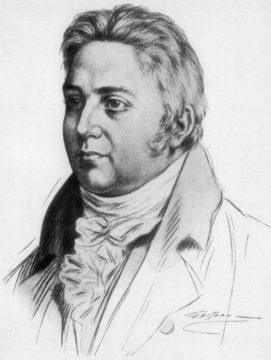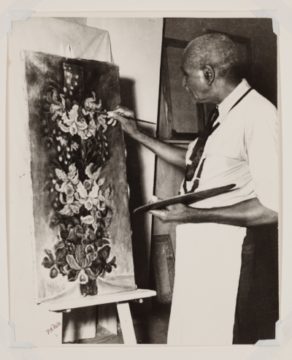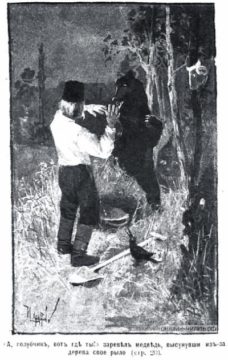by Eric Bies

In 1895, Ernest Hartley Coleridge published a volume of selections from his grandfather’s notebooks. Anima Poetae, the first such selection to be assembled, granted readers passage into the fantastic interior of the man, poet, and uncommon philosopher George Saintsbury would one day declare worthy of Aristotle and Longinus. Simply open the book onto any of its three hundred thrilling pages, and there shall be revealed the soul of the great Romantic poet Samuel Taylor Coleridge. Most fascinating among these revelations, perhaps, is the record of the poet’s reading. We learn, for instance, of his fondness for Milton and Swift—of his unfondness for Darwin and Hume. We learn that he puzzled (as Ezra Pound a century hence) over Duns Scotus and the Trinity, and that he was gobsmacked with the Germans: names like Kant, Fichte, and Schiller propagate like cacti. At one point we catch him privately praising the letters of Dorothy Wordsworth (“the best reading in the world”). Strikingly modern, we find he was a reader of dreams, too—his own often fitful, plaguing the waking hours—and even made some of them up:
If a man could pass through Paradise in a dream, and have a flower presented to him as a pledge that his soul had really been there, and if he found that flower in his hands when he awoke – Ay! and what then?
In the early nineteen-tens, the American scholar Jonathan Livingston Lowes undertook to mine the fullest possible spread of the notebooks. Combing through the archives of the British Museum and the Bristol Library, he herded his systematic record of the poet’s reading into one of the first great studies of the imagination. Upon its release in 1927, The Road to Xanadu drew admiration from every quarter. Readers could not help but to boggle at the rigor of its scholarship—painstaking literary detective work of the most rewarding type, as when Charles Olson crept through Melville’s marginalia and located all of that Shakespeare in Moby-Dick—much of which established the first key links between the books Coleridge perused and the poems he composed.
We learn, for instance, that he couldn’t get enough of those far-flung excursion narratives publishers now package as travel writing. Lowes showed how all the exotic imagery that decorates a poem like “Kubla Khan” could not have been painted in without the specific descriptive aid of authors like Samuel Purchas, William Bartram, and James Bruce. The coinciding acts of reading, thinking, and writing—of seeing, sleeping, and dreaming—converge upon what Henry James, in his preface to The Americans, called the “deep well of unconscious cerebration”:
I was charmed with my idea, which would take, however, much working out; and precisely because it had so much to give, I think, must I have dropped it for the time into the deep well of unconscious cerebration: not without the hope, doubtless, that it might eventually emerge from that reservoir, as one had already known the buried treasure to come to light, with a firm iridescent surface and a notable increase of weight.
Back in 1895, a twenty-eight-year-old H. G. Wells was putting the finishing touches on his first novel (in truth, simply a different kind of travel writing). Serialized in weekly installments, The Time Machine spun the yarn of a Victorian scientist who, having devised a vehicle capable of traversing the ages, voyages far into the future. Upon arrival in the year 802,701 AD, the Time Traveler steps out onto a planet that has assumed the lush proportions of a utopian garden. Soon after, he meets the Eloi, the peaceful race of diminutive beings who populate this future Earth. He also encounters the Morlocks, horrific carnivores who live in subterraneous caverns and, by night, climb up through old disused wells to capture a few succulent Eloi. Factions clash, a damsel is saved, and escapades straight out of Walter Scott (anticipating the forthcoming flood of fantastic pulps) ensue. In the end the Time Traveler returns to the—his originating—present, only a few hours past. Naturally, he expects his report to be met with skepticism:
“No. I cannot expect you to believe it. Take it as a lie—or a prophecy. Say I dreamed it in the workshop. Consider I have been speculating upon the destinies of our race, until I have hatched this fiction. Treat my assertion of its truth as a mere stroke of art to enhance its interest. And taking it as a story, what do you think of it?”
His audience cannot help but to balk. All it takes, however, is no more and no less than a vacationer’s souvenir to form the evidence necessary to the belief in such an unlikely itinerary. Look: There upon the table at which the Time Traveler holds court lie a couple of “strange white flowers,” preposterous in the natural order of Victorian taxonomy, plucked from future soil.
One night in America, a little Black boy, born a slave, knelt down at the foot of his bed and prayed to God for a pocket knife. Satisfied with his conscience, he climbed into bed, fell asleep, and dreamed a dream. In his dream he stood at a point in a field where the rank and file of corn and tobacco came close to clashing. In his dream he could see that a watermelon perched upon that meeting place between the bending crops. But someone or something had split the fruit in two. One half appeared gnawed-through and hollowed out, as though the rats had made a feast of it. The other half displayed its wealth of red flesh and black seeds—and sticking up from the green hump of its back was the smooth black handle of a pocket knife. When the boy woke at dawn, straightaway, he ran to that place, a real place in the field out back. Sure enough, there where the corn and tobacco met sat the two halves of a watermelon. One half was chewed up, the other was not. And from the back of the healthy half the black handle of a pocket knife emerged.

The dream and its fulfillment come from an early biography of George Washington Carver, The Man Who Talks with the Flowers (1939). Author Glenn Clark, occasionally awkward, ignorant, and racist, nevertheless wrote a book that remains of interest, not simply for its intimate account of Carver’s life (Clark knew and spent time with Carver in Tuskegee), but also for the sincerity of its spiritual mission. For Clark, Carver was not, first and foremost, a genius of scientific invention, but rather one of mystical communion. Again and again we read of the aged scientist—Clark’s “black Da Vinci”—waking from dreams, or else entering and exiting daytime reveries, on the wings of Godly inspiration. To write about this side—evidently the major side—of Carver’s life is to constantly resist the hagiographical impulse. He really does bear, in word and deed, a striking resemblance to those other dreamers, the saints, and makes an especially strong match with Francis of Assisi, who also talked with the flowers, preached to the birds, and, on at least one occasion, tenderly shook the paw of a wolf. Another dreamer, G. K. Chesterton, who numbers among the biographers of il Poverello, once wrote:
In a dream daisies may glare at us like the eyes of demons. In a dream lightning and conflagration may warm and soothe us like our own fireside. In this sub-conscious world, in short, existence betrays itself; it shows that it is full of spiritual forces which disguise themselves as lions and lamp-posts, which can as easily disguise themselves as butterflies and Babylonian temples.
Chesterton, like Henry James before him, could not discuss the operative character of dreams without also laying bare the machinery of great fiction. Little surprise, then, when an author as intuitively oneiric as Nikolai Gogol insists, in “The Nose,” that everything happening—man wakes up noseless, etc.—is not happening in a dream. To do otherwise, Gogol discovered, was to undermine the force of his narrative: spiritual or surreal—call it what you like—this undermining agent is the primary ingredient in rendering readers deliciously uncertain of up’s upness. Isn’t it true, anyway, that our most memorable dreams, just like our favorite stories, are those that make life harder to live, not easier?
In an earlier tale, “A Bewitched Place,” a Ukrainian farmer accidentally discovers what seems to be a wormhole in the middle of his watermelon patch. Stepping, not just anywhere, but upon a specific spot instantly teleports the stepper (Gogol’s narrator refers to him as “Grandad”) elsewhere:
He looked around: no melon garden, no dealers, nothing; behind, in front, on both sides was a flat field.
Grandad finds himself in the local cleric’s garden. He takes a stroll around the grounds and, beside one of the paths, notices a little glowing grave, candle-lit. Suspecting that the plot conceals buried treasure, but lacking a spade, the old man marks it with a large branch. He returns the following day by foot, toting proper implements, and searches high and low but fails to locate either branch or grave. Next day he decides to try the wormhole again: he steps upon the right spot and—voilà—he’s back! But now the grave is covered over with a large stone, which he struggles to remove. Finally, rolling it aside, he starts digging, and finds that the digging is easy. Then—plink!—he hits metal: a cauldron. What’s inside? But before he can take a peek, a bird, a sheep, and a bear enter the scene and begin to taunt him, parroting his every word:

“Hm!” said Grandad, and he felt terrified.
“Hm!” piped the beak.”
“Hm!” bleated the sheep.
“Hm!” roared the bear.
Horrified, he bolts, carrying the unwieldy cauldron in front of him. When he finally returns home, his wife takes him (coming quickly through the gloom, cauldron-first) for the uncanny threat of a rolling barrel. In a swift defensive maneuver, she launches a trayful of dirty dishwater and melon rinds, sliming him from head to toe. (If you haven’t guessed, this story is a master class in the crank’s proper ratio of expletive to expectorate.) Now, now—”What do you suppose there was in it? Come, think, make a guess! Eh? Gold?”—no—the Devil take it!—only a soup of foul slops. Grandad washes his hands, curses, spits some more, and designates the wormhole as the family’s dumping ground. He fences it in.
Such a story begs the question: What are dreams good for? Sometimes they have transmitted some much-needed insight—like Kekulé and his benzene serpent. Other times they have told us what to do—as with Francis splashing fresh mortar over the fissures at San Damiano. Sometimes we dream our dreams, and sometimes our dreams seem to dream us. Slipping into sleep, walking in our sleep, and waking from it, we day-dream, see things, sometimes say things, and most of the time forget to write it down. Freud deemed dreams “never concerned with trivia,” and Coleridge claimed to have received “In Xanadu,” “the milk of Paradise,” and everything in between from a dream—probably opium-induced—and would have gotten the rest of it down if it weren’t for that pest from Porlock. H. G. Wells, thirty years after The Time Traveler, published his thirty-fourth novel, The Dream, about a scientist from the distant future who dreams he’s an Englishman born at the tail end of the Victorian era. And William Shakespeare, in A Midsummer Night’s Dream—which Chesterton argued was not only his greatest comedy, but his greatest play, period—has Titania say, upon stirring from one:
My Oberon, what visions have I seen!
Methought I was enamored of an ass.
